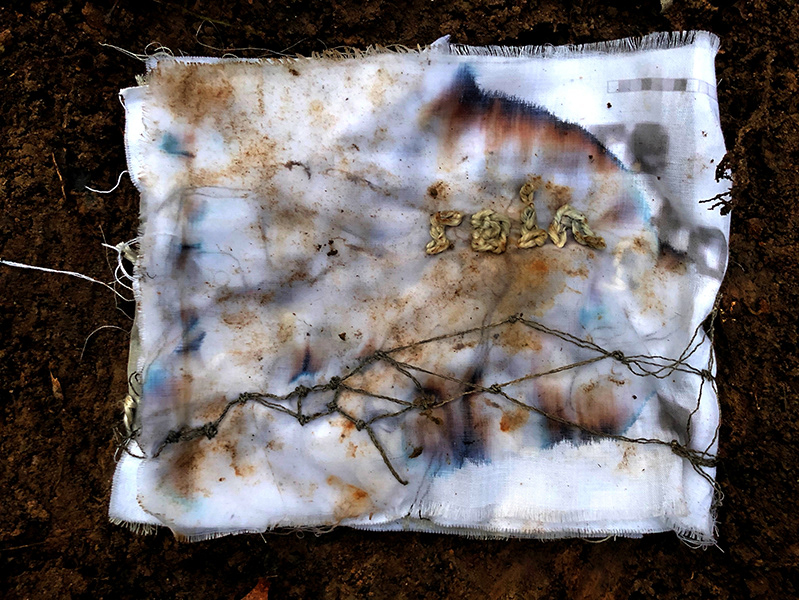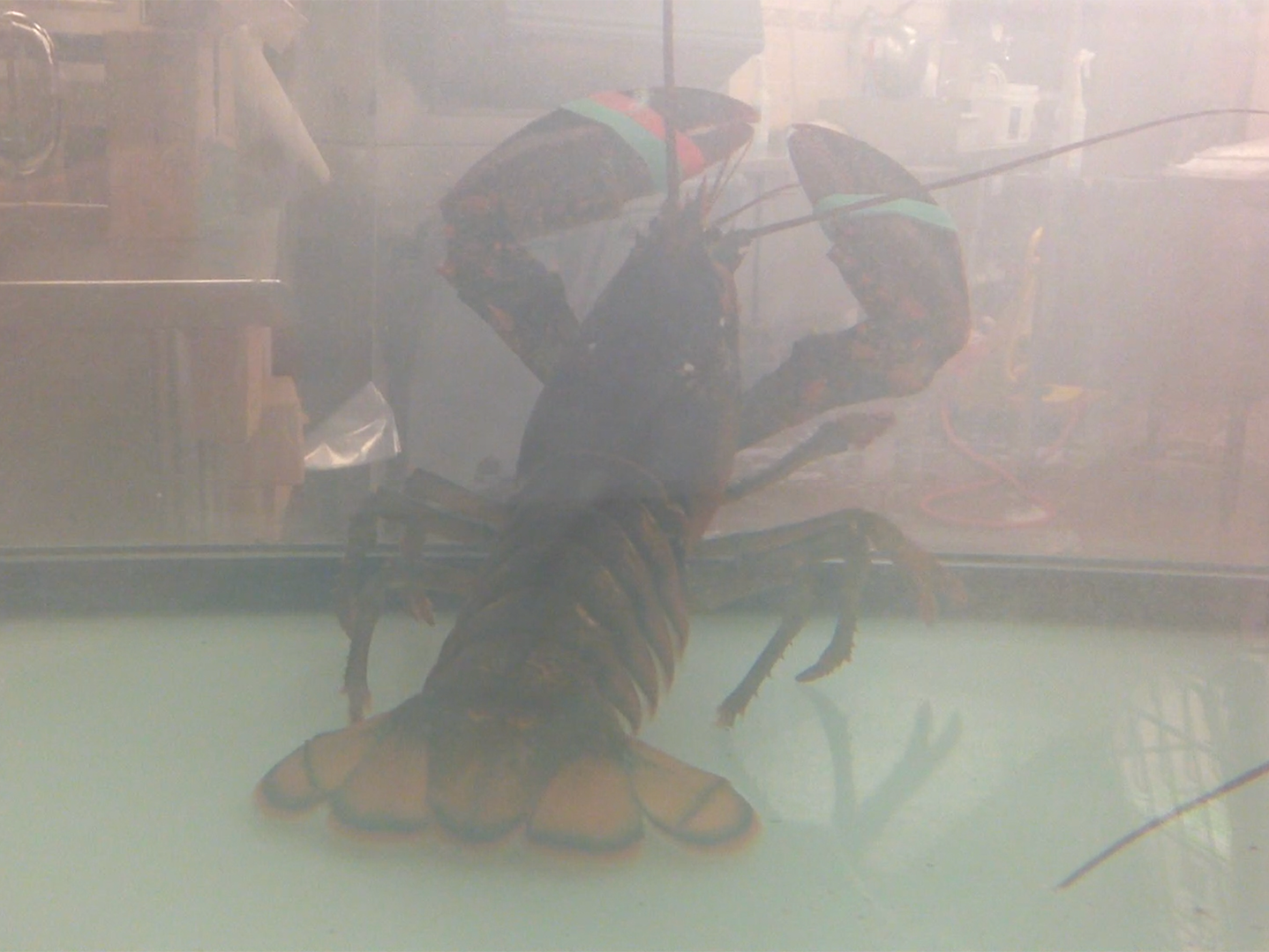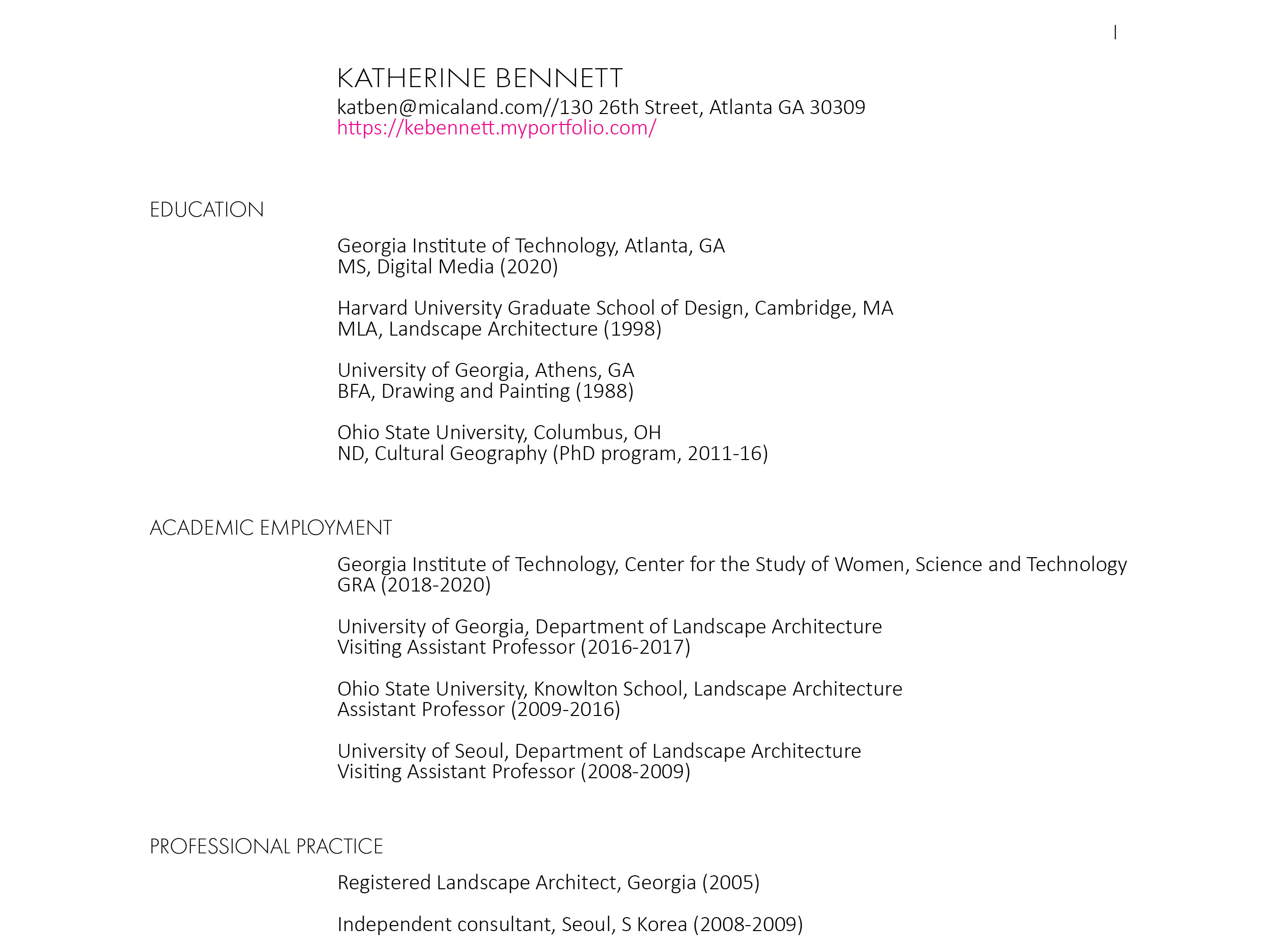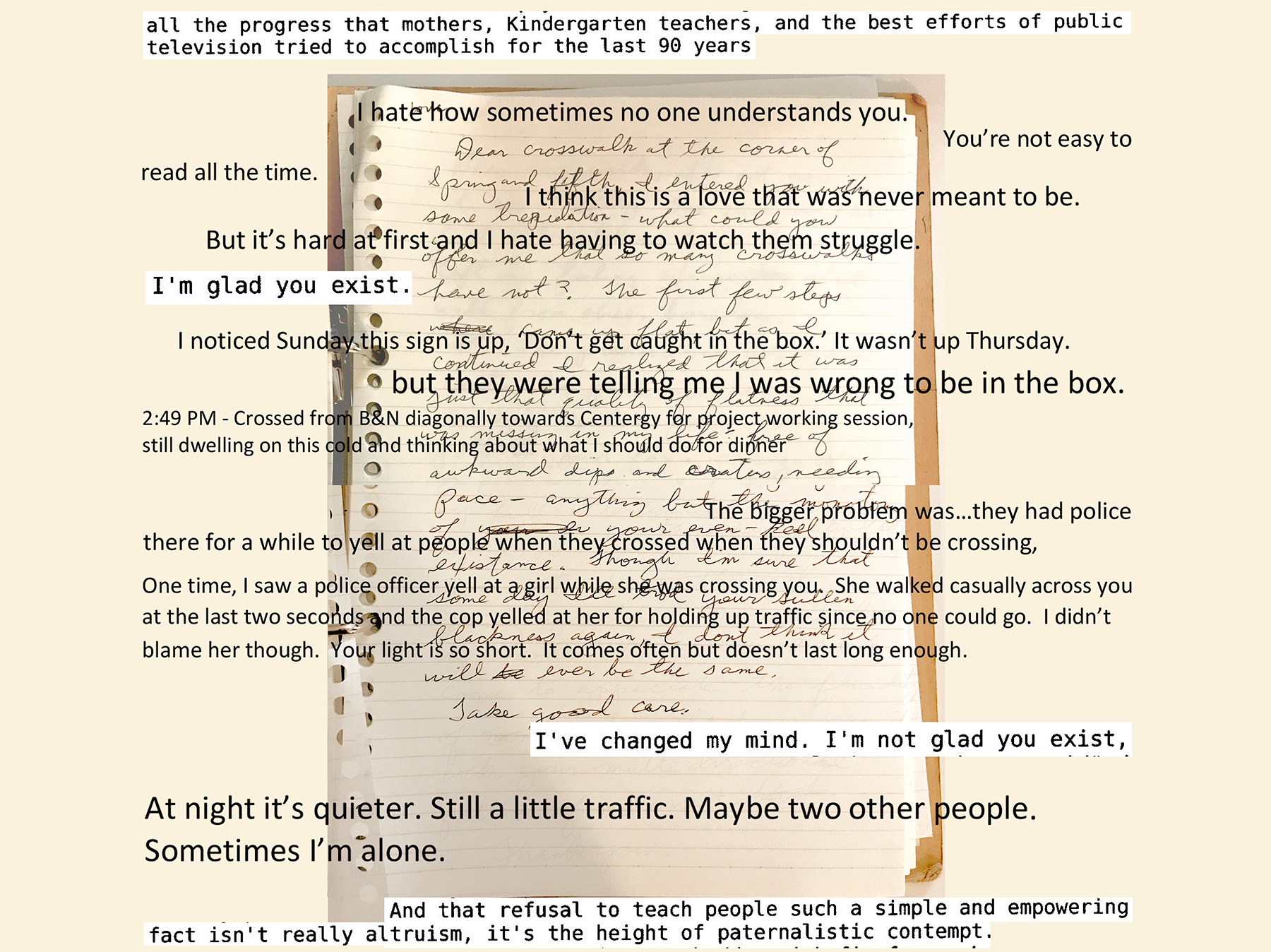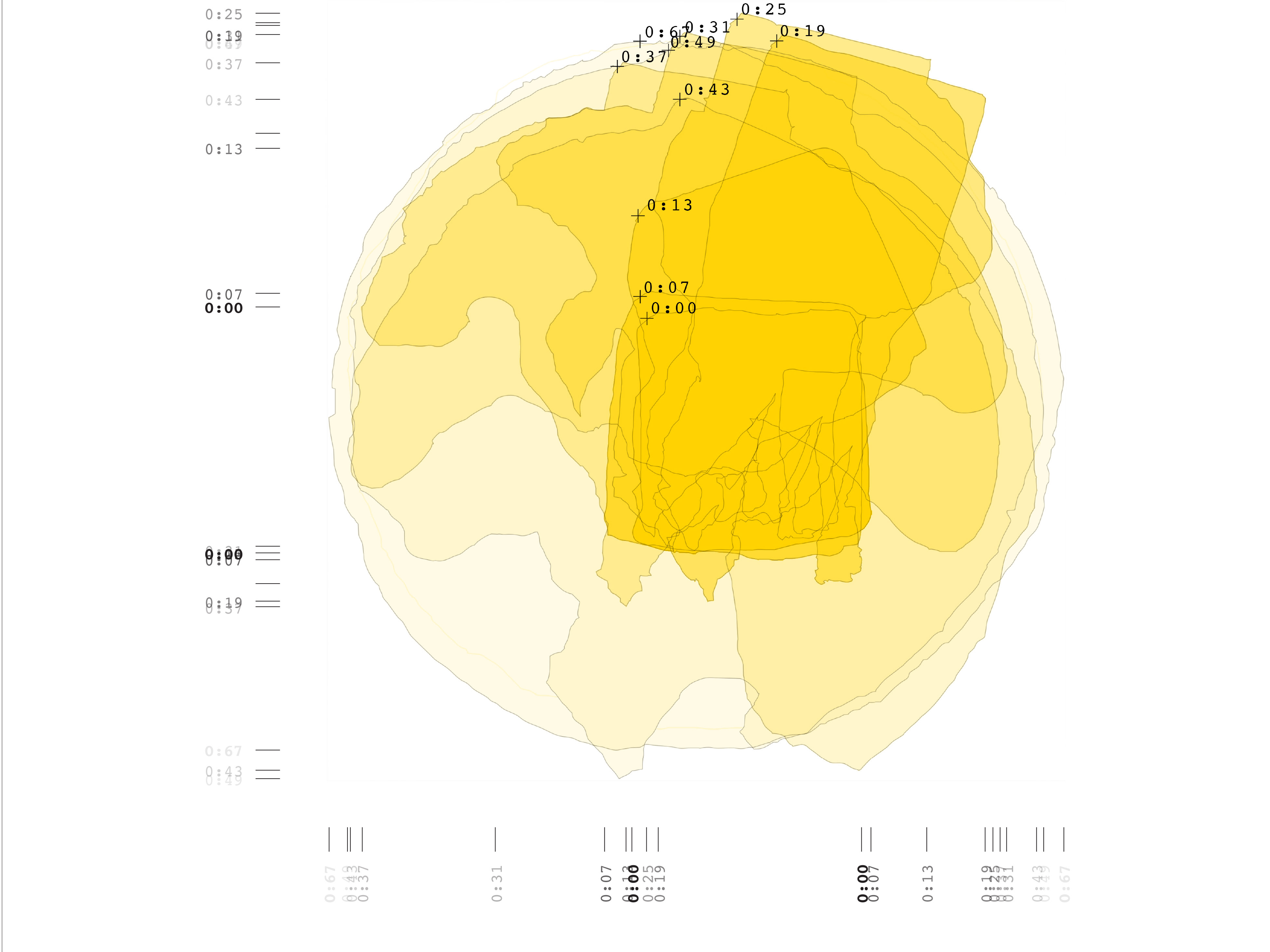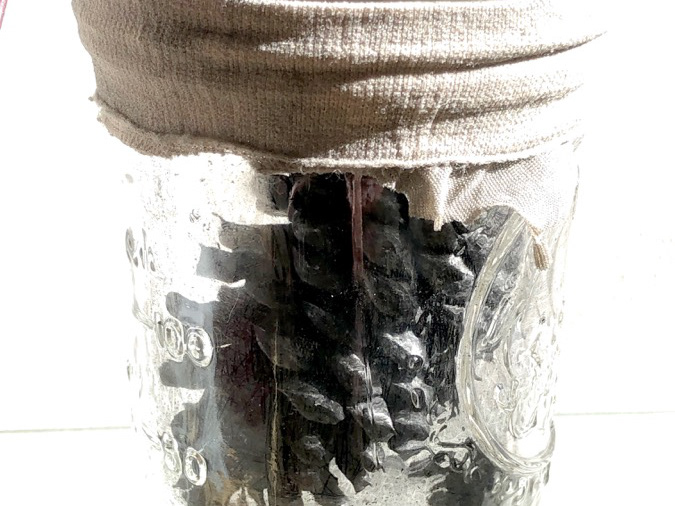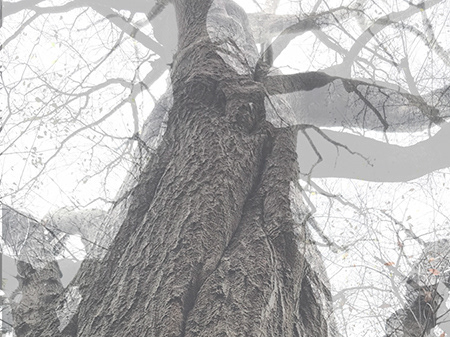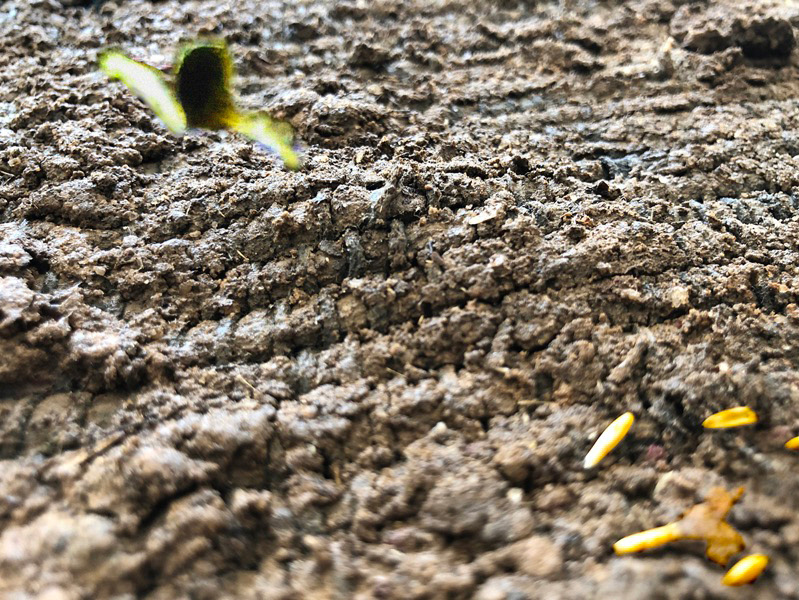Collage, Katherine Bennett, 2018. Final project image.
TEAM Katherine Bennett, Anuraj Bhatnagar, Christina Bui, Jihan Sherman
TEAM WEBSITES Anuraj Bhatnagar (https://anurajbh.com/design/accessalator/), Christina Bui (https://christina-bui.github.io/Escalators.html), Jihan Sherman (https://jihansherman.com/works/projects/escalators/)
18 OCT - 30 NOV 2018, Prof. Nassim Parvin, GTA Aditya Anupam
Project description. "When you're doing the research, you design the research method" (Nassim Parvin, critique discussion, 2018). In this 6-week collaborative project, our team researched transitional sites and contexts of design in public transit stations. Our design-as-research process integrated research methods of brainstorming, team discussion and sketching, fieldwork, storytelling, interviewing, and design precedent/case studies. This mixing of methods traced our development of previous class projects as we selected a new design intervention focus, spatial and social contexts, and finally a design proposal to represent the different ways people experience and interpret transition, our assigned topic.
MARTA station photos from left: Arts Center, Jihan Sherman; North Avenue, Katherine Bennett; Midtown, Christina Bui; Doraville, Christina Bui.
Proposal. Over the course of the project, our design focus and scope shifted from escalators within light rail and bus stations to the extended experience of passing through and between stations in downtown and suburban Atlanta. But our social context of shared and individual spaces and pathways, which emerged in discussion shortly after we decided on our (initial) focus, organized our shared and individual thinking through the design development. This sustained and flexible exchange between shared and individual design thinking describes our mixing of methods as much as it characterizes our design proposal: a changing, group curated, group exhibition of projected artwork by individual artists and design teams in Atlanta's MARTA transit stations. See design and artwork ideas explored individually by my team members on their websites (at top). My ideas interweave with a discussion of our design process, below.

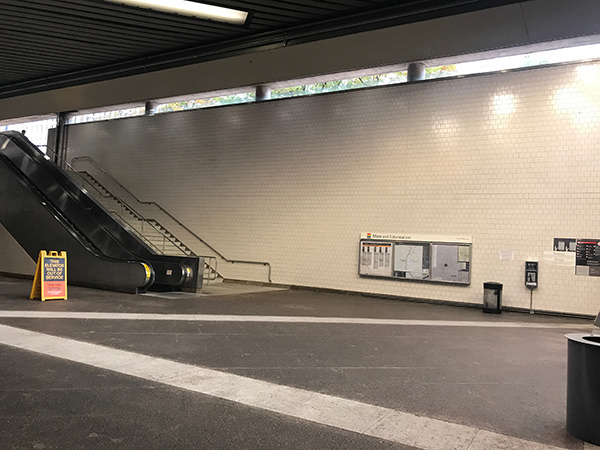
Photos, Katherine Bennett, North Avenue MARTA station elevator, escalator, and stair connections to the street.
Brainstorming. We began the project with a team brainstorming session to which we contributed more ideas later. At this stage, we were considering design intervention possibilities for several different kinds of transitional spaces previously studied by the class. A list of our starting ideas is posted below, along with meeting notes I wrote throughout the process, and a story I wrote about one escalator experience. (See team member websites for more shared notes and stories.)
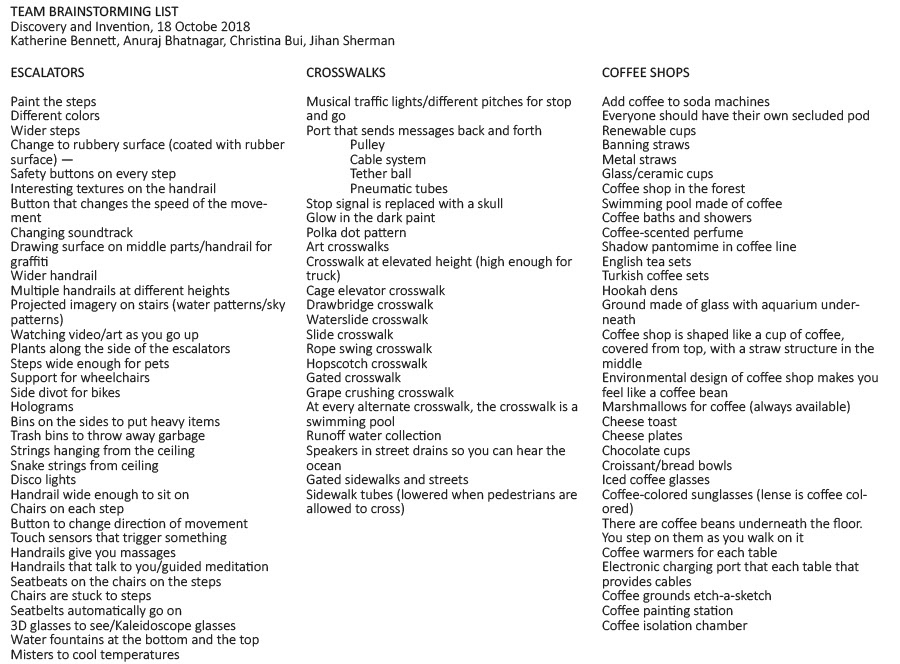
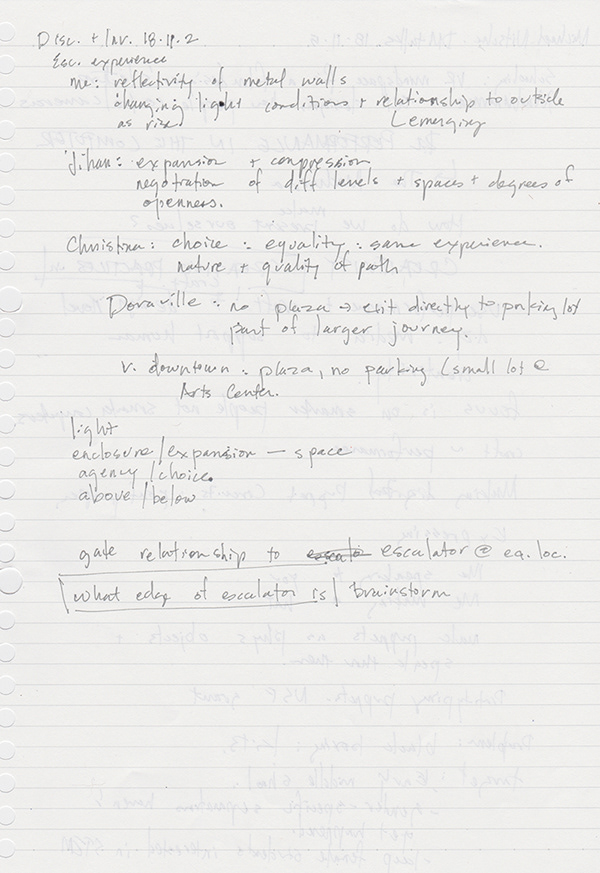
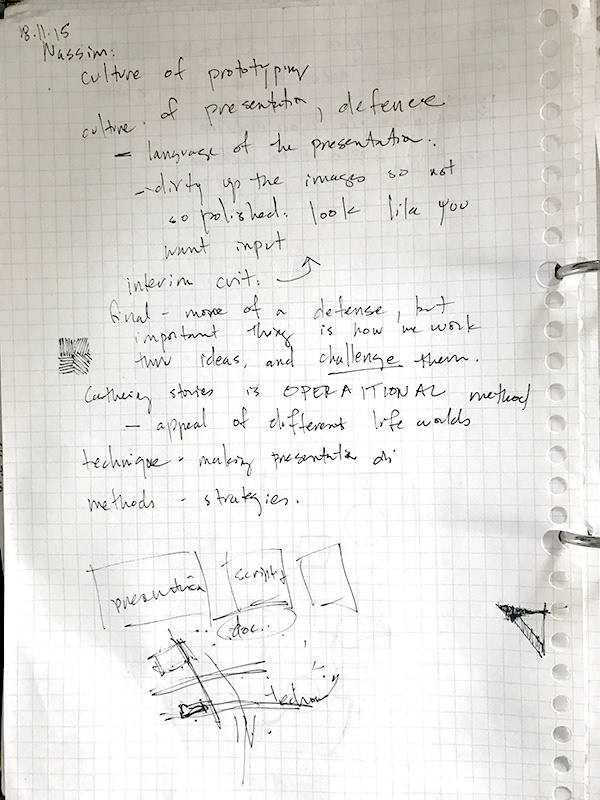
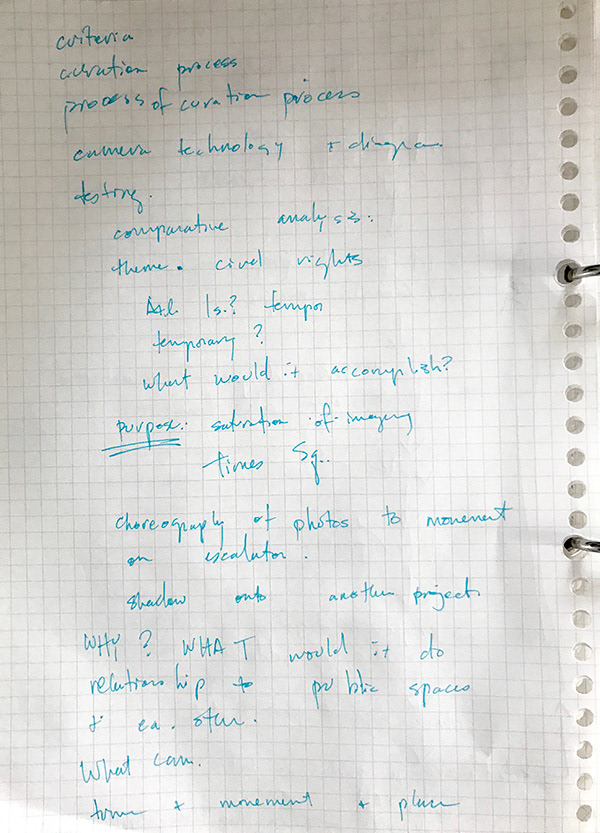
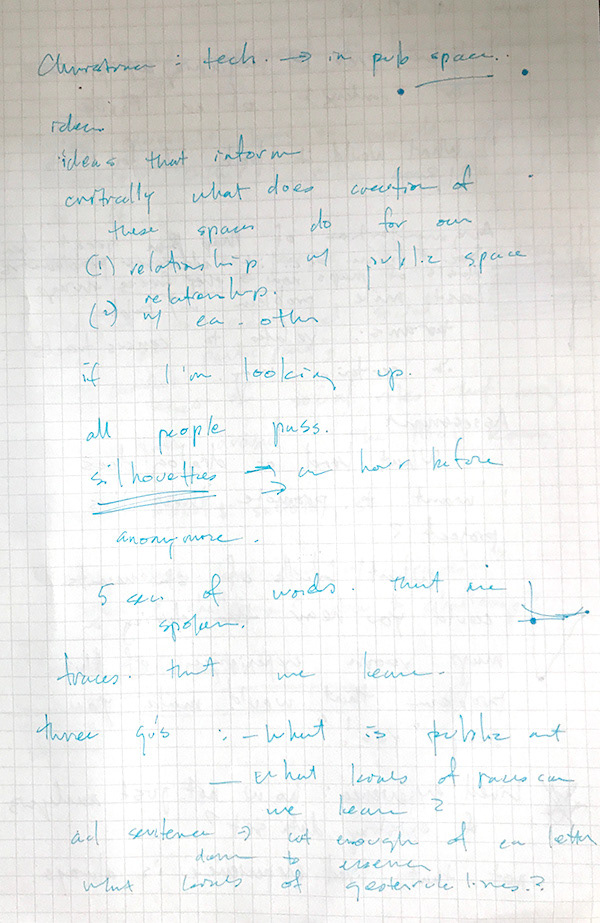
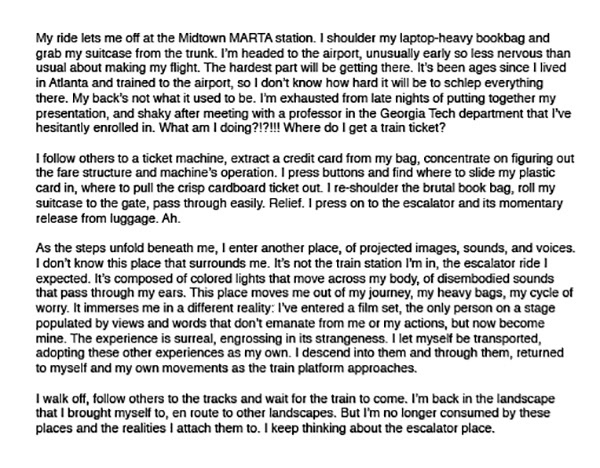
Team brainstorming list, team/meeting notes, and my escalator story, Katherine Bennett.
Sketching. As a team, we elected to focus on escalators after our processes of team and individual brainstorming. Escalators gave us the social nexus of crosswalks and coffeehouses (explored in previous projects), but with more environmental control. Escalators offer a differencing experience of motion: that out-of-body sensation of moving while standing still or accelerating while climbing slowly that's quite distinct from sitting in a car or train. Escalators, we realized, tend to occur in places frequented by large numbers of visitors. These numbers, and the revenue streams they can produce, justify the spatial and maintenance requirements of escalators as well as their initial cost. We looked around the city and found them in tourist attractions and shopping centers as well as MARTA transit stations. During this phase of escalator exploration, we each sketched ideas for design interventions:
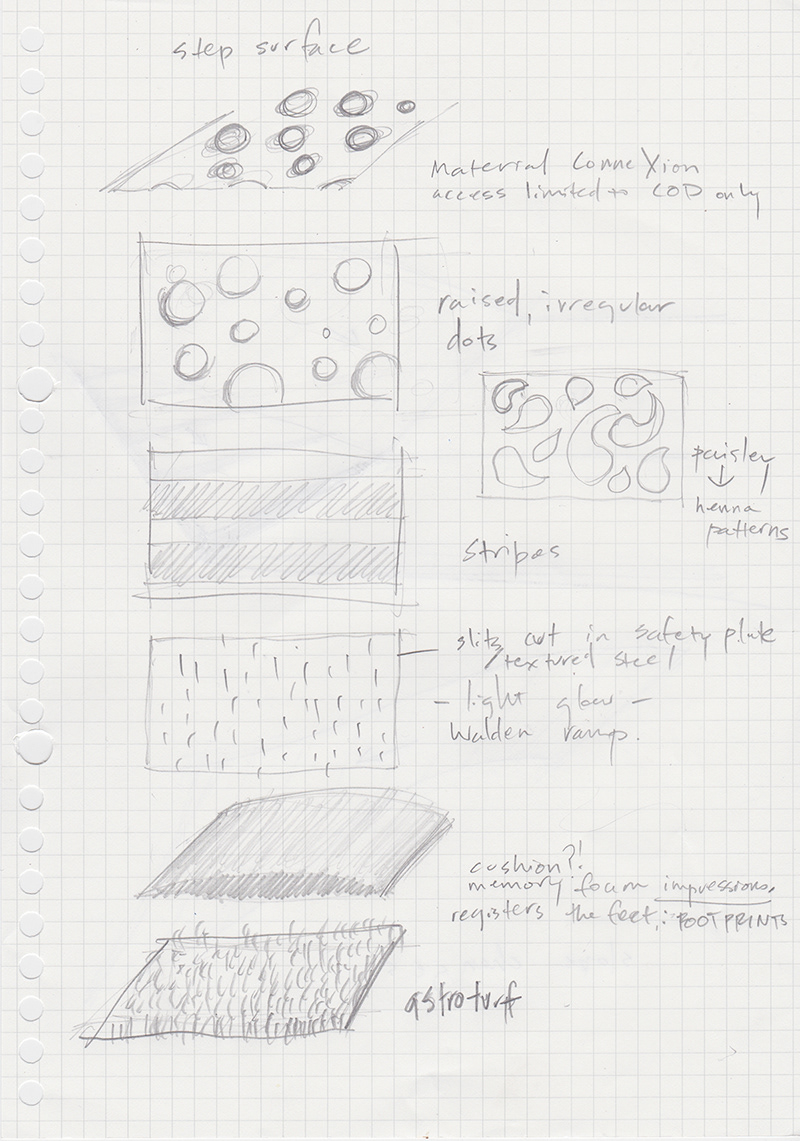
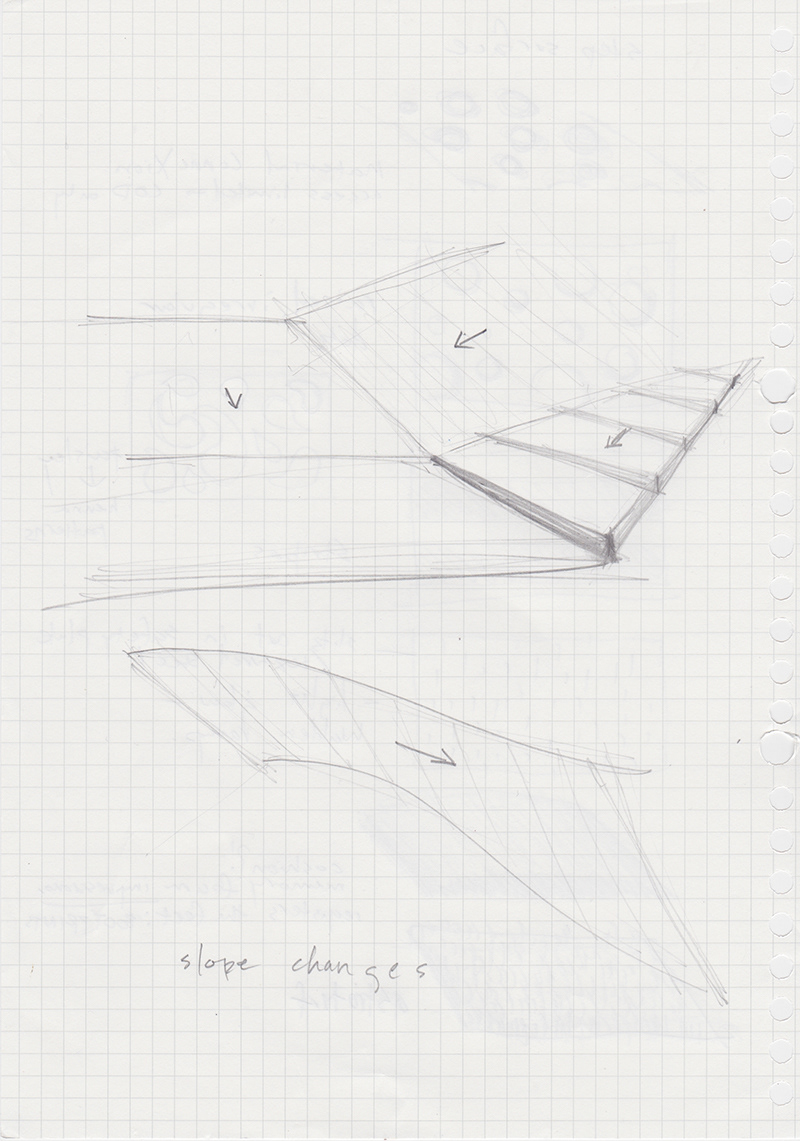
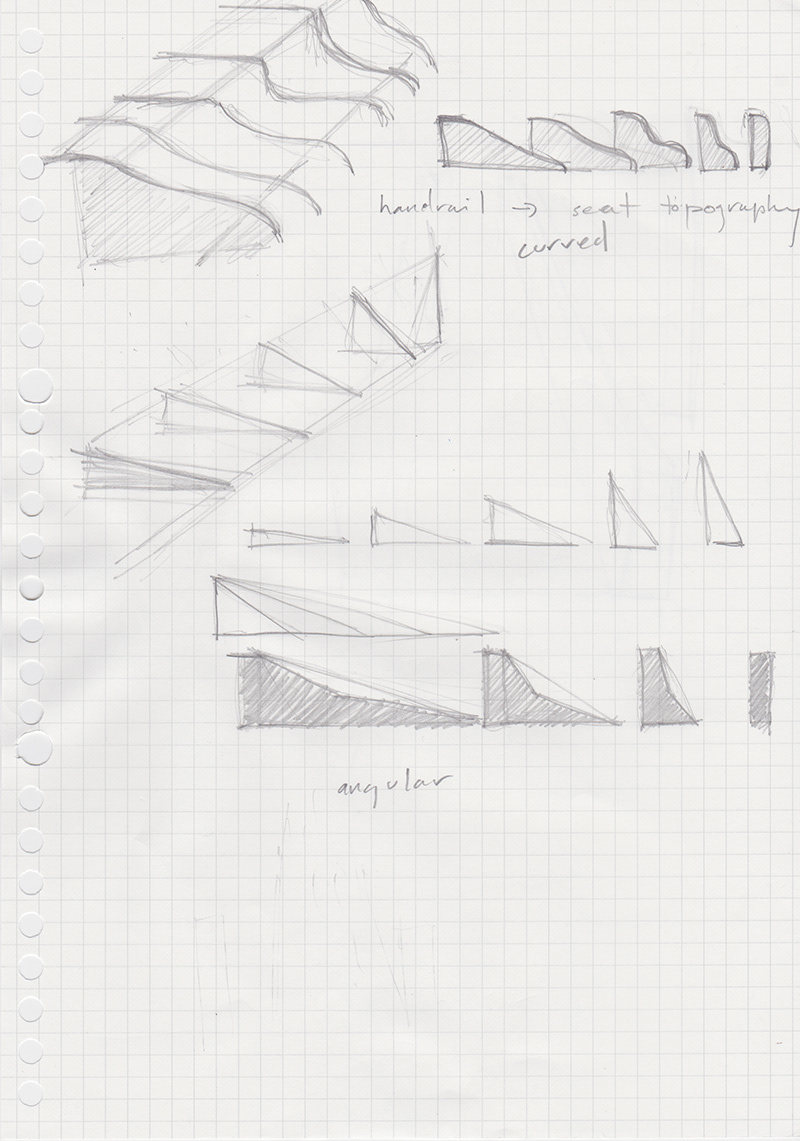
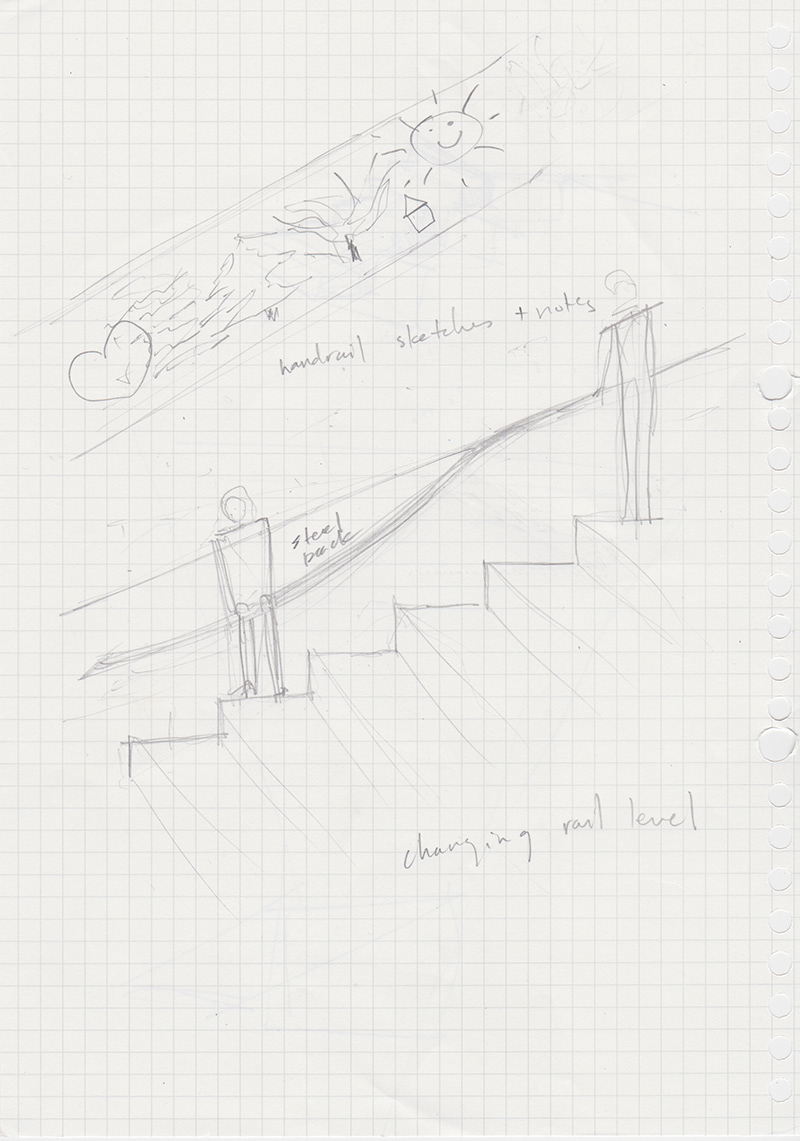
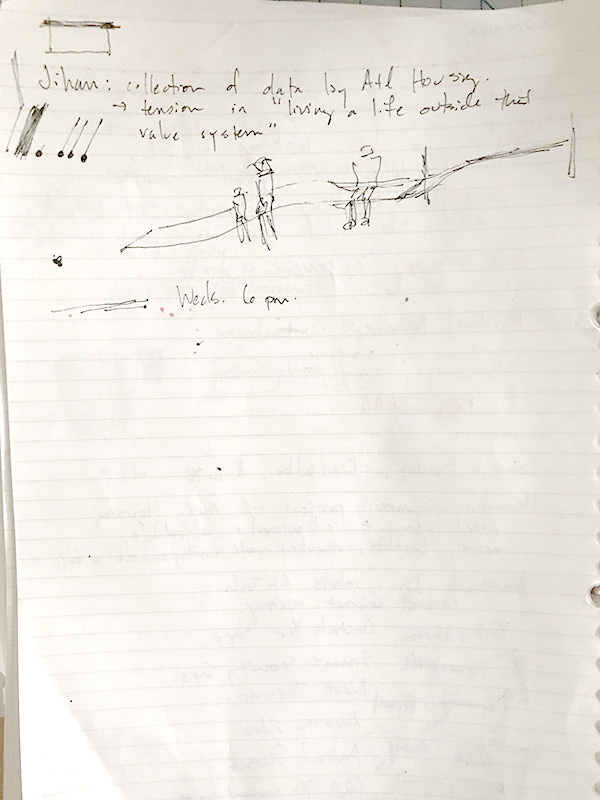
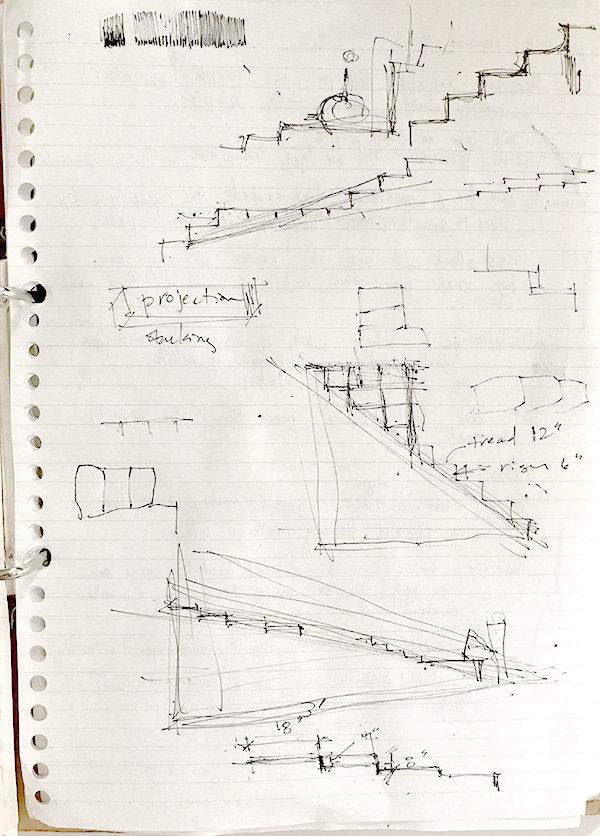
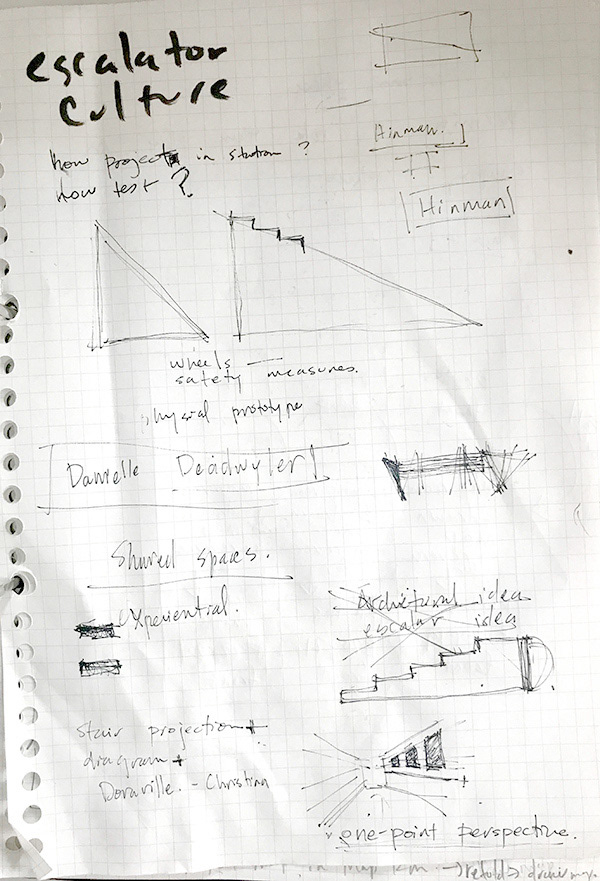
Idea sketches and diagrams, Katherine Bennett.
Digital drawing and collage. After sketching different ideas for reconfiguring escalator steps and handrails, I wanted to revisit my brainstorming interest in changing the spatial experience of escalators through projected imagery. The luminous quality of projection creates immersive and temporal conditions suited to the confined, in-limbo border space of escalators: They can operate as standing theaters (for those not in a rush!). Meanwhile, our team decided to site our escalator studies in the MARTA transit stations we frequented -- three nearby (Arts Center, Midtown, North Avenue) and one at the NE end of a line (Doraville). Transit stations are public infrastructures for spatial and other forms of transition. People using them move not only between places but also situations, as from home to work, or a site of limitations to a site of possibilities, or, sadly, sometimes, the reverse. Each of us went off to individually sketch ideas specific to "our" MARTA stations (see team member websites):
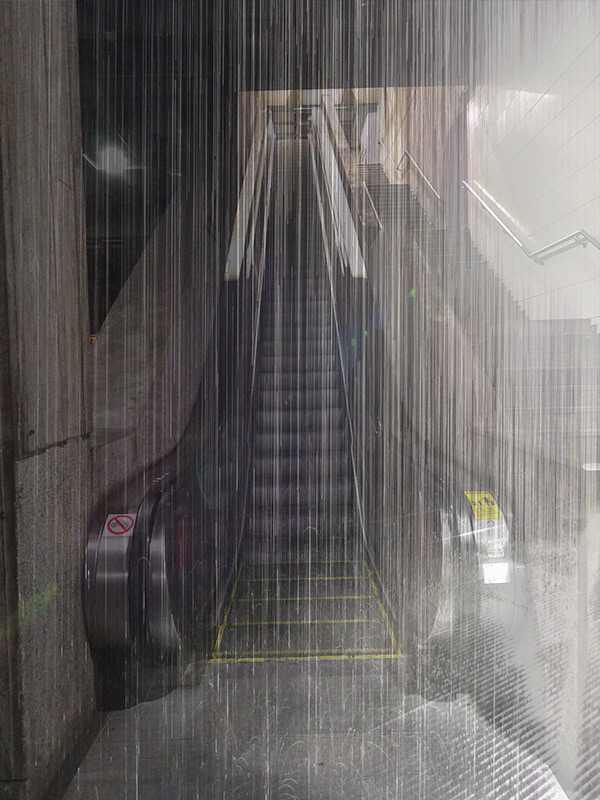
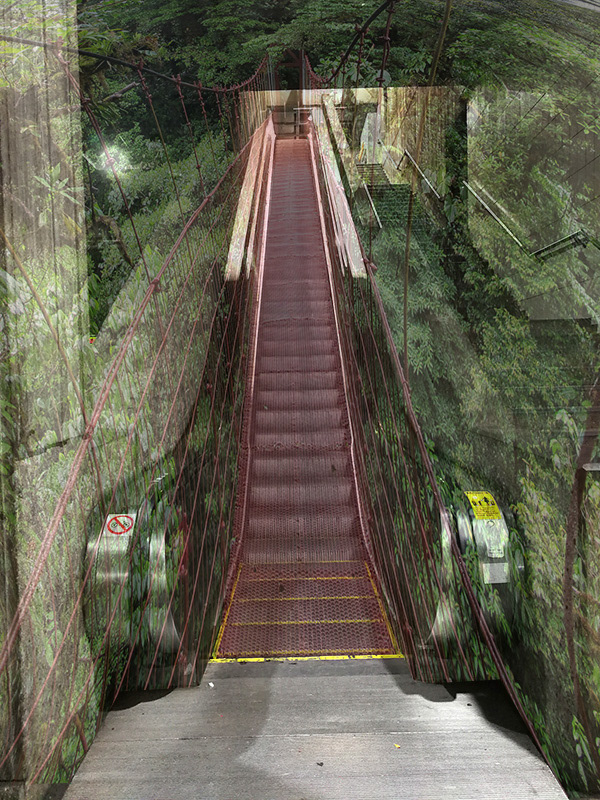
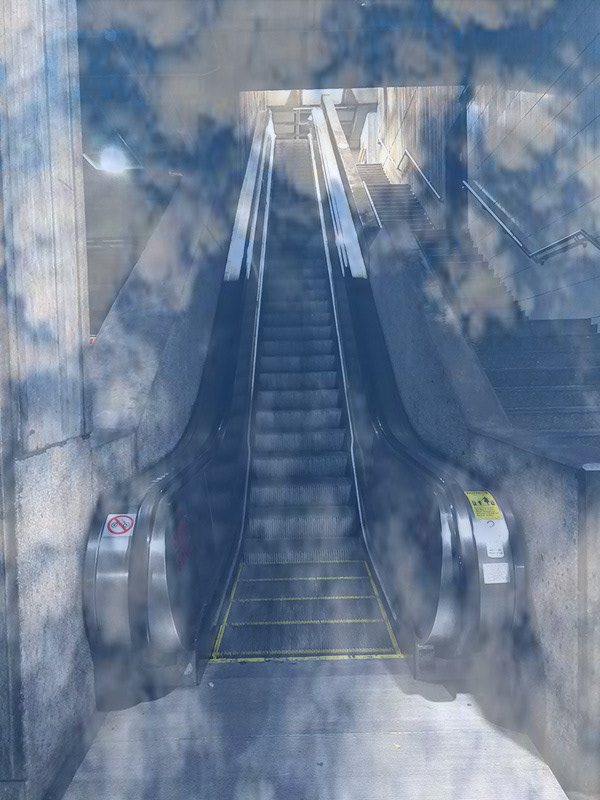
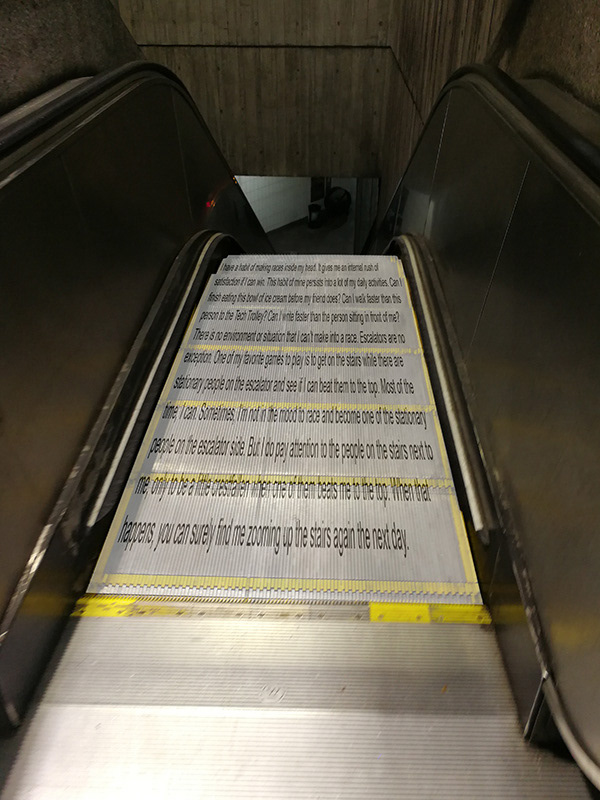
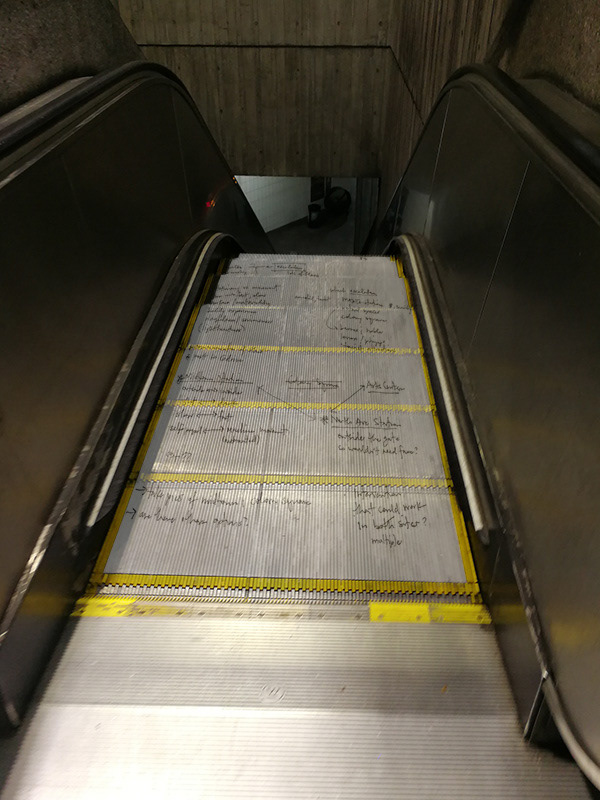
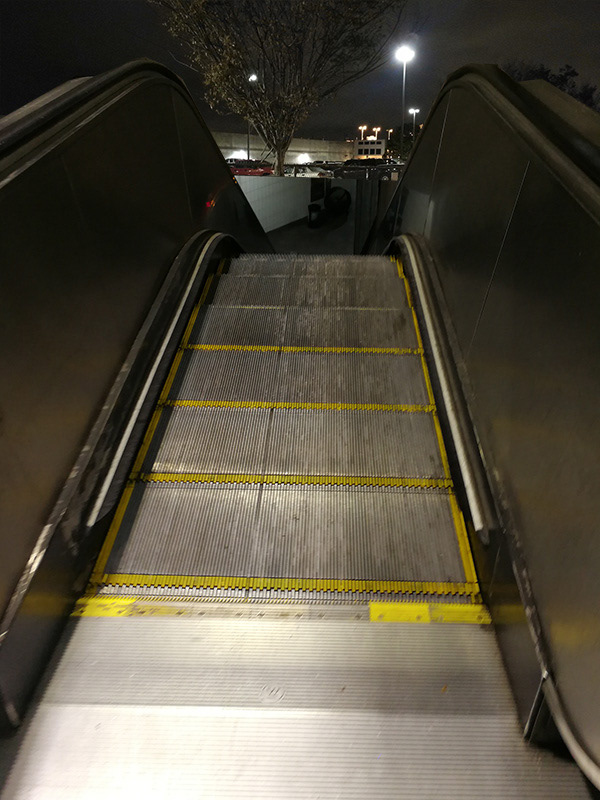
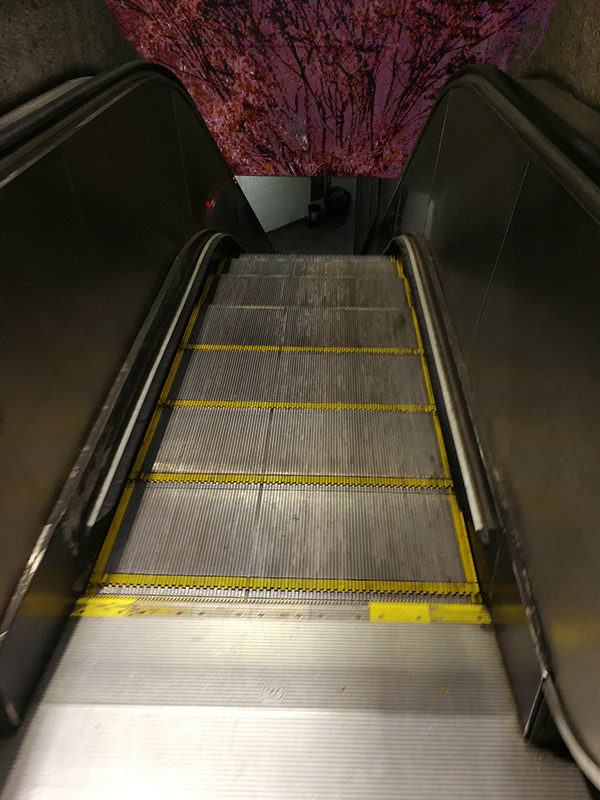
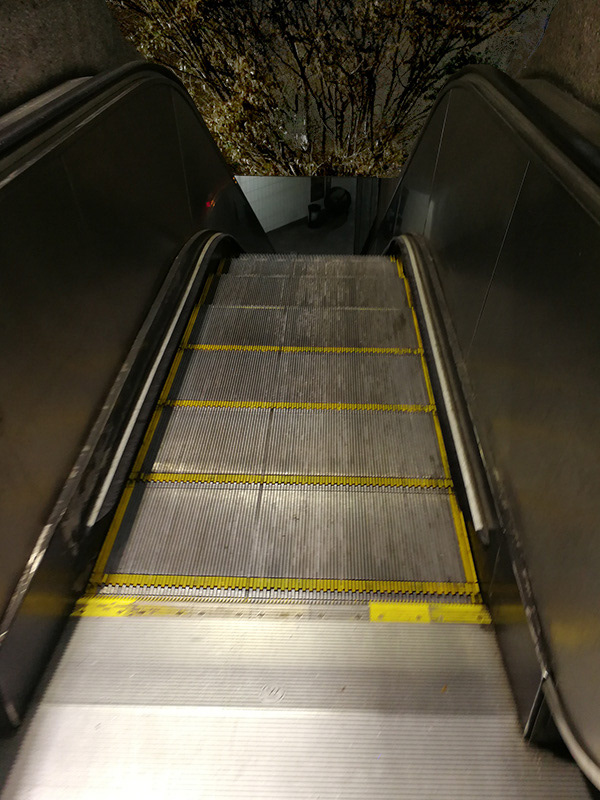
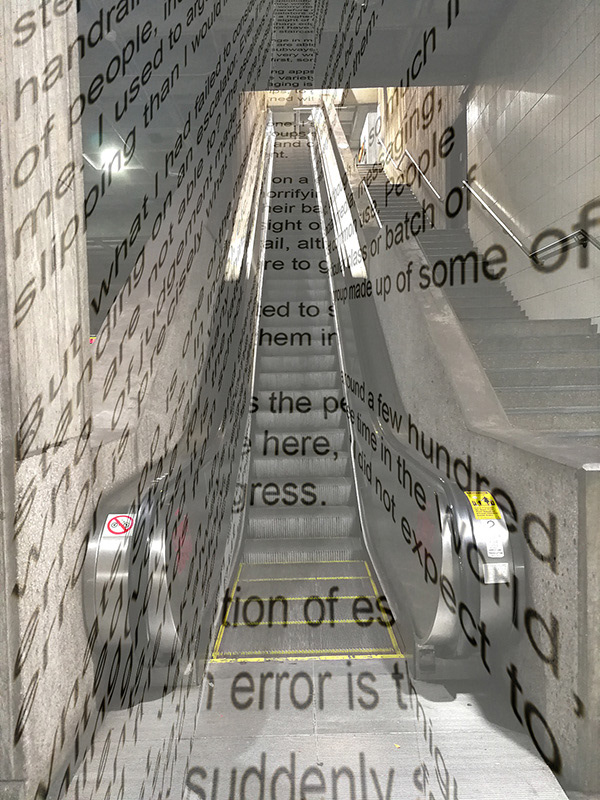
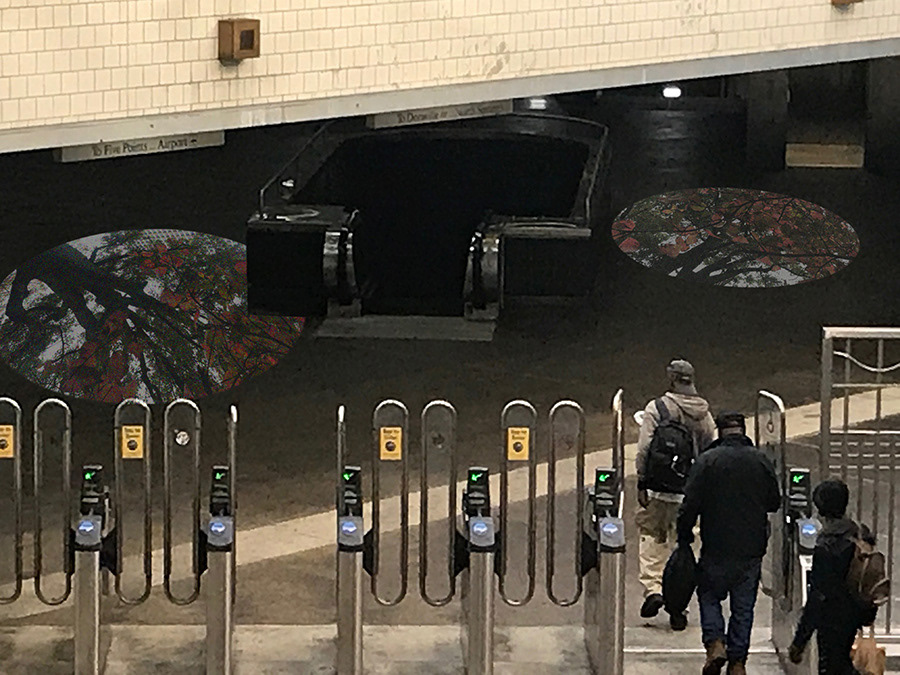
Digital sketches, Katherine Bennett, with photos of the Midtown and Doraville stations by Christina Bui (first 9 images from top left) and photos inside and outside the North Avenue station by Katherine Bennett (last image bottom right). "Projected" texts are by Christina Bui (top, second from right), Jihan Sherman (top, far right), and Anuraj Bhatnagar (bottom, second from right).
Final drawings. Following a meeting with Nassim, I developed my ideas for projecting photos of different stations into each other as a way to represent the displacement of traveling between places. Nassim noted that we carry with us the images of places and people we encounter, while leaving traces of ourselves behind. She suggested introducing time-delay intervals to the live footage projections I'd been considering, and using silhouettes of people I photographed. The silhouettes and time delays protect the privacy of these people, while referencing the history of photography and projection I'd been researching. I took Nassim's advice to extend the projections into station spaces beyond the escalators, turning some photos upside down to mimic the reversal of images in 16th century camera obscura. I doubled silhouettes of changing colors to express the always redoubling identities, pigmentations, and histories that we share, individually and together.
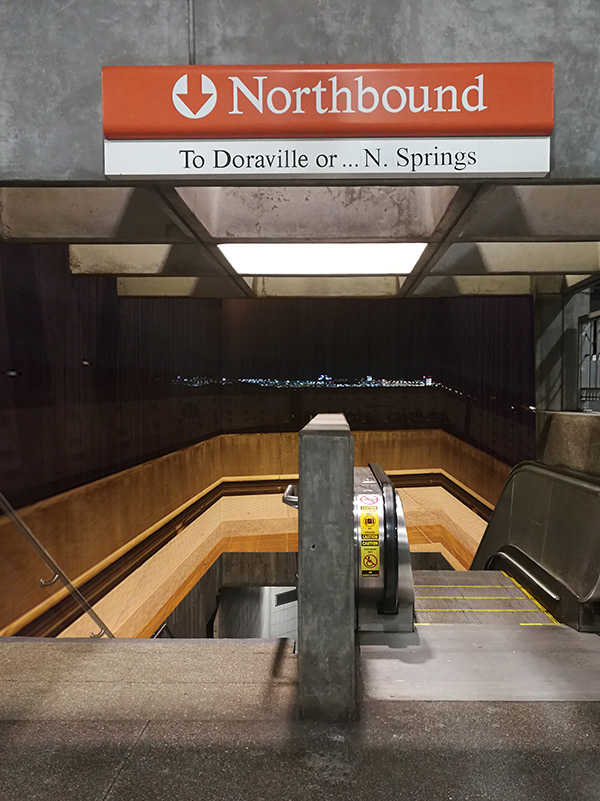
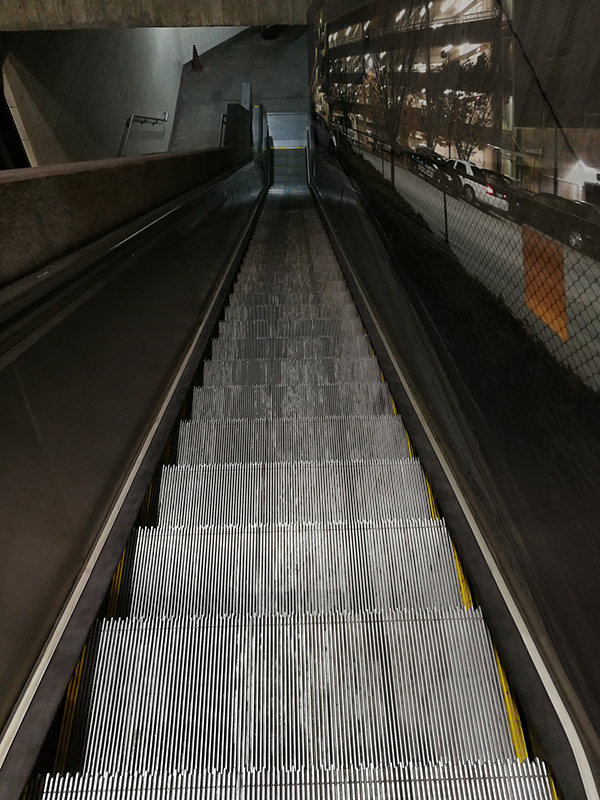
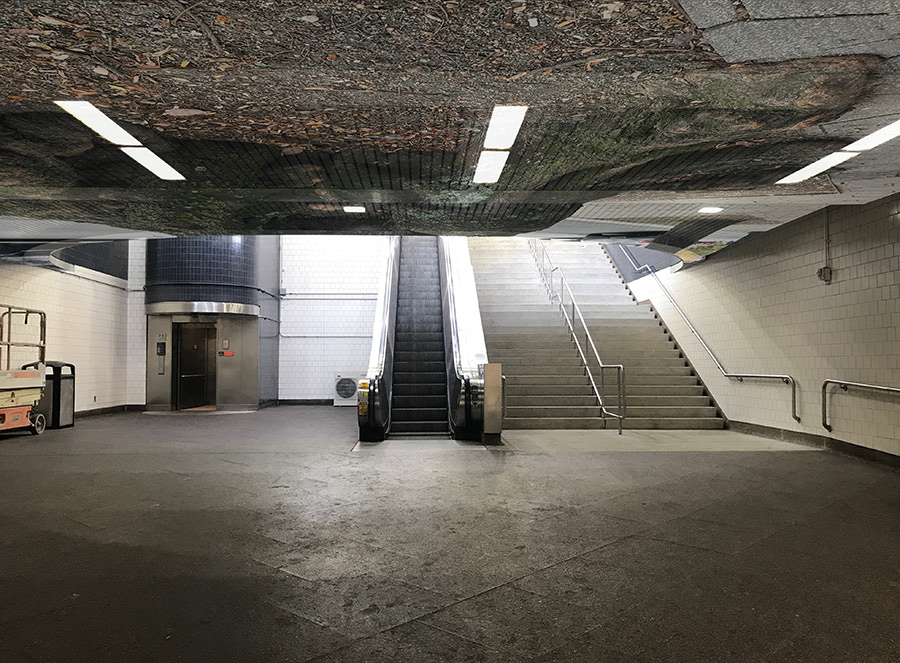
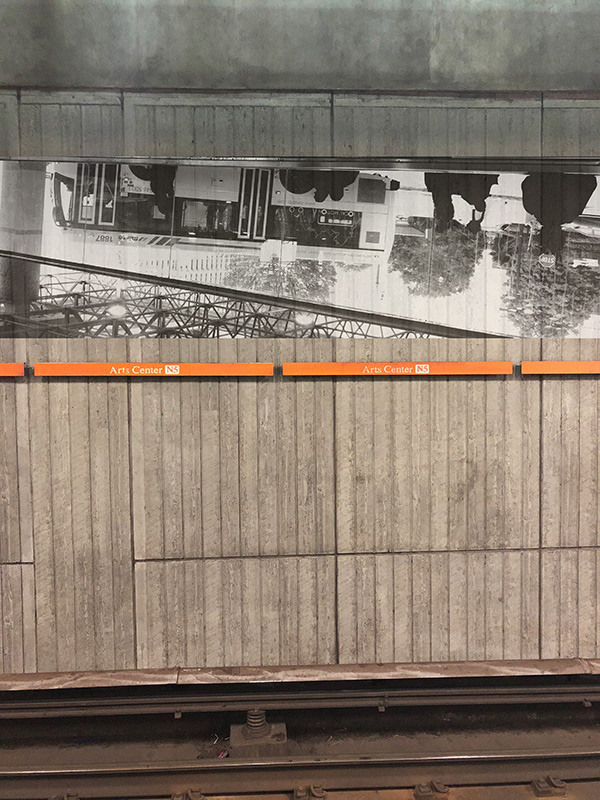
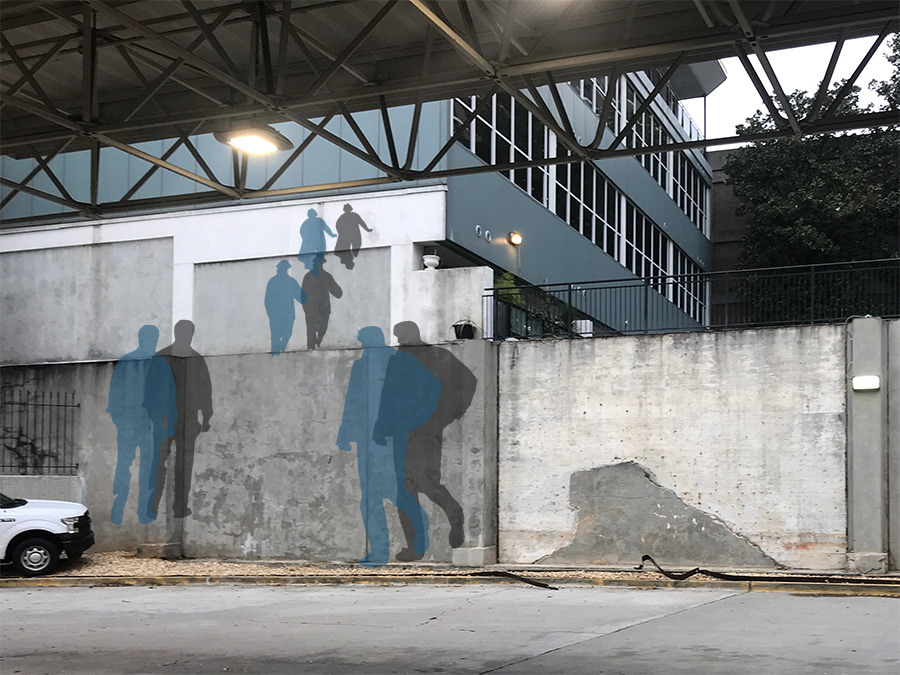
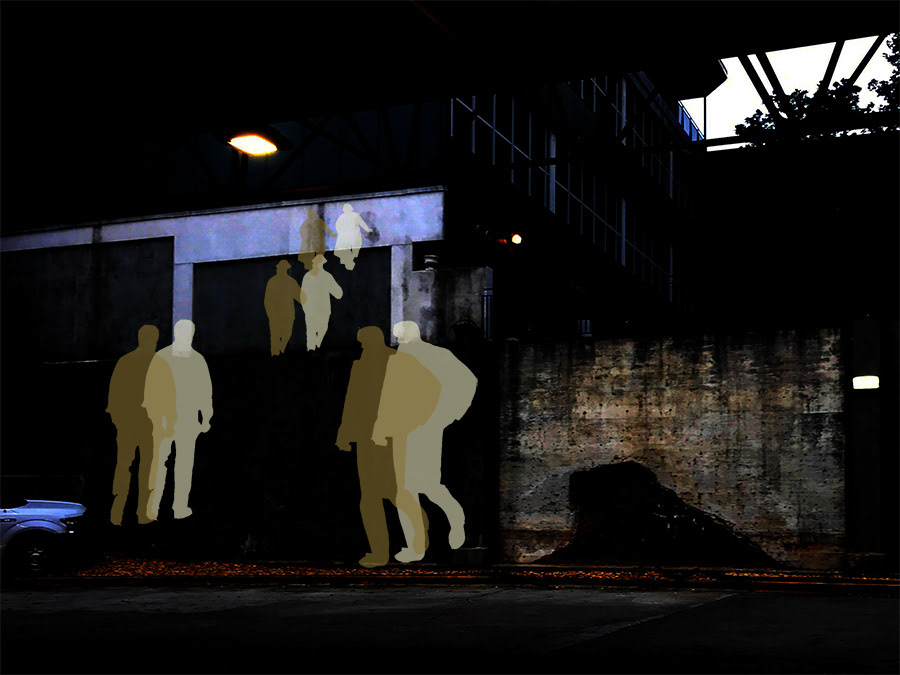
Digital drawings, Katherine Bennett, with photos of the Midtown and Doraville stations by Christina Bui (top 2 images), North Avenue station by Katherine Bennett (center left, bottom left and right), and Arts Center station by Jihan Sherman (middle right).
Group exhibitions. Our proposal for an on-going and regularly changing exhibition of projection art in MARTA stations throughout the city advocates working “with the community” rather than “for the community.” In the context of Atlanta's thick diversity of communities and within communities, "with" means crossing boundaries of gender, race, class, and social/ professional identities. We specify a curatorial team composed of a working local artist, a custodian or employee working in the MARTA stations, and a rider who uses these stations regularly, in addition to established cultural and community representatives. Jihan's interview with a professional artist in Atlanta provided a substantive basis for our proposal and specifications, elaborated in her interview notes (link to her website at top) and our group presentation:
Final presentation, Katherine Bennett, Anuraj Bhatnagar, Christina Bui, Jihan Sherman.
